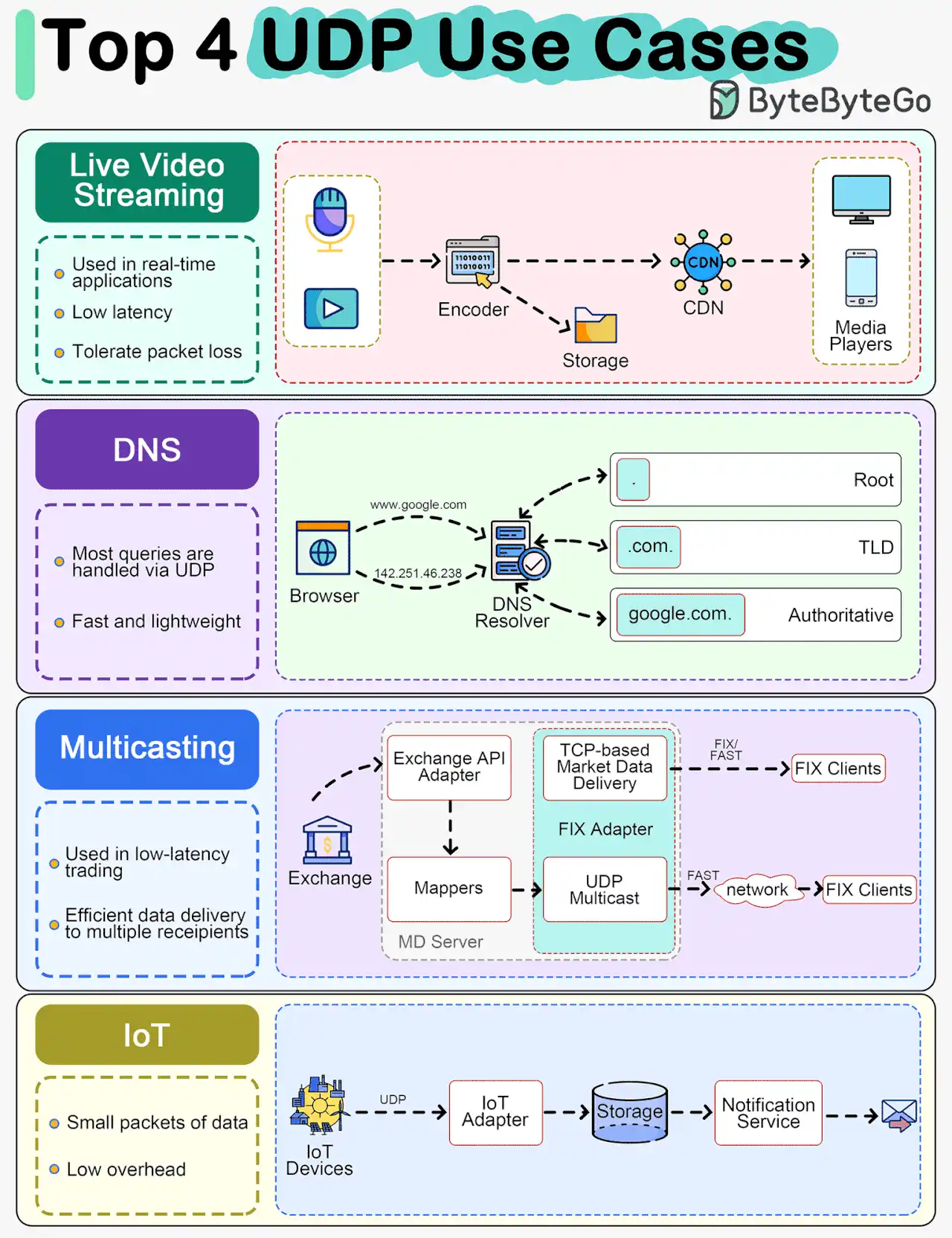UDP Protocol
UDP Protocol
Introduction
- UDP (User Datagram Protocol) is one of the core protocols of the Internet Protocol (IP) suite, operating at the transport layer.
- It is a connectionless and lightweight protocol that provides a way to send messages, called datagrams, between devices on a network without establishing a connection.
Features of UDP
Connectionless Protocol: UDP does not establish a connection before sending data. It sends datagrams independently of one another.Minimal Overhead: Due to its simplicity, UDP has very low overhead. The header is only 8 bytes, compared to TCP’s 20 bytes.Unreliable Data Transfer: There is no guarantee of delivery, order, or duplicate protection. Packets can arrive out of order or get lost without notification.No Congestion Control: UDP does not provide congestion control mechanisms, which can lead to network congestion under heavy load.Broadcast and Multicast Support: UDP supports broadcasting (sending a packet to all devices on a subnet) and multicasting (sending a packet to multiple devices in a group).
Benefits of UDP
Low Latency: Because it doesn’t establish a connection or maintain state information, UDP provides faster data transmission, which is ideal for time-sensitive applications.Simple and Efficient: Its simplicity makes it suitable for simple query-response protocols like DNS, where low overhead is beneficial.Supports Multicast: Useful for applications that need to send the same data to multiple recipients simultaneously.Suitable for Real-Time Applications: Applications that can tolerate some data loss but require timely delivery, like VoIP and online gaming, benefit from UDP.
Use Cases of UDP
Real-Time Applications: VoIP (Voice over IP), video conferencing, and online gaming rely on UDP for low-latency communication.Streaming Services: Video and audio streaming services use UDP to provide continuous and real-time streaming, where occasional loss of packets is acceptable.DNS Queries: Domain Name System (DNS) queries use UDP because of its low overhead and speed, making DNS lookups faster.SNMP (Simple Network Management Protocol): Used for network management and monitoring, where quick transmission of small messages is necessary.Broadcast and Multicast Communications: Applications like IPTV and service announcements utilize UDP’s broadcasting and multicasting capabilities.
Comparison with TCP
- While UDP offers speed and efficiency, it lacks the reliability features of TCP (Transmission Control Protocol), such as error recovery, flow control, and guaranteed delivery.
- Thus, the choice between TCP and UDP depends on the application’s need for reliability versus performance.
This post is licensed under CC BY 4.0 by the author.
